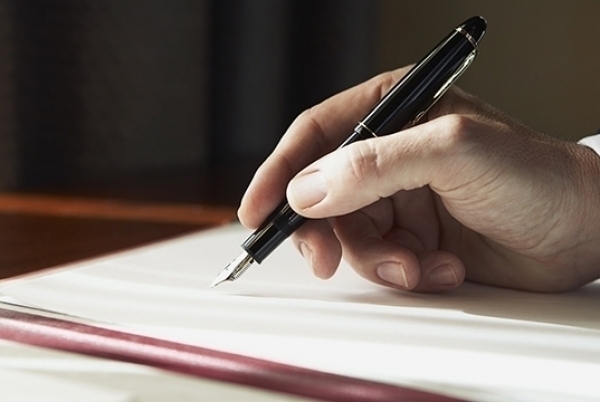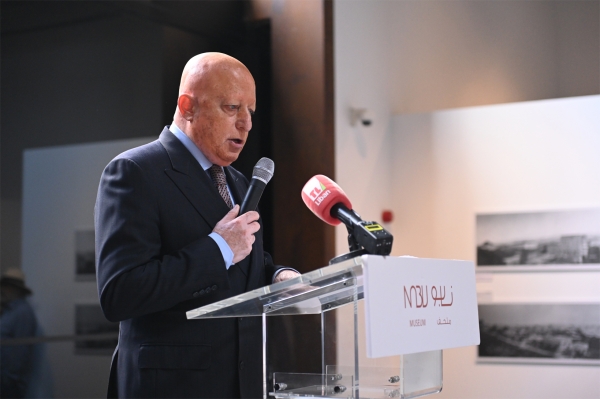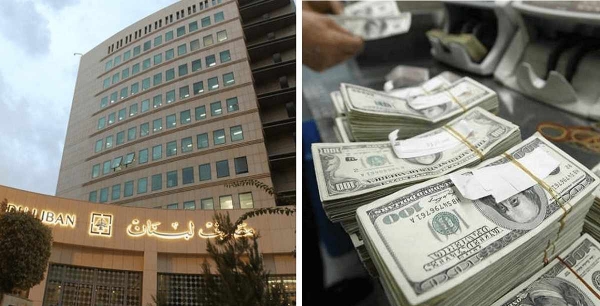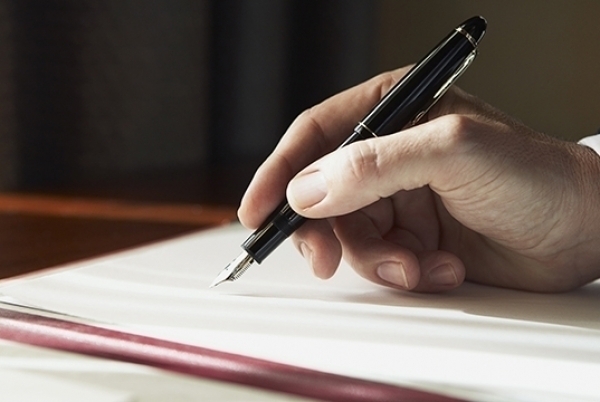Between Fakhreddine’s millions and the Medicis
Between Fakhreddine’s millions and the Medicis
This article was first written and published in July 2016 (The Monthly, issue No. 164) and we are republishing it today as the economic crisis is worsening and the Lebanese millionaires are growing their wealth immensely from the Lebanese economy.
For us, the Lebanese, Tuscany assumes particular significance not only for having ushered the Renaissance era in Europe, but because it was the chosen destination of the exiled Prince Fakhreddine II, from where he borrowed architectural features that remain evident in Lebanon today.
Researchers are still studying the origins of the Etruscans who settled before Christianity between the Arno and Tiber Rivers in an area that was later named after them, Tuscany.
Herodotus suggested that the Etruscans came from our homeland, north of Syria- modern day Turkey- a claim that was substantiated by the DNA results of 2007. This account becomes increasingly convincing when one checks the Etruscan carvings and artworks, which date back to that epoch. However, there is also a possibility that the Etruscans did not emigrate from any region but were actually a population indigenous to Tuscany, which adopted Florence as its capital city.
Like some of his modern day counterparts, Fakhreddine wanted to win foreign forces round to his cause. To that end, he attempted to persuade the Grand Duchy of Tuscany into “liberating” the lands from Ottoman domination, so he spent five years in exile in Tuscany and deposited in Monte Di Pietà bank an amount worth billions of dollars by today’s market rates. Fakhreddine thought his money would eternalize him so he sent it off to the Grand Duchy of Tuscany, which somehow managed to confiscate the funds.
The Medicis who ruled Florence from 1434 till 1737 were neither known for their justice nor for their democratic rule or empathy towards the poor. Nevertheless, they left both a cultural and artistic legacy that has afforded them and Tuscany an everlasting reputation.
Notwithstanding their importance, the credit does not go entirely to the Medicis, for Tuscany was also home to Dante (1265-1321) who laid the cornerstone for the Italian language and standardized it as a language for all; prior to which Latin had been considered a language reserved for the elite. Part of the credit goes equally to Francesco Petrarca (1304-1374) who rediscovered Cicero’s letters, left the monkhood, fell in love with Laura and wrote her letters that were all the rage across Europe. Before becoming the miserable spot it is today, our homeland had once exported through the Franks (Crusaders) art and science to the outer world, which contributed to the birth of humanism. In that land, modern-day Italy, the people witnessed the glory and power of Rome, its democracy and the republics that arose under the city-states.
Humanism, a movement of which Petrarca was a founding father and which resurrected the non-theistic, non-totalitarian traditions that the Church had tried to erase, planted the seeds of Renaissance in Florence. Following the Black Death epidemic, there arose several demographic changes and trade opportunities that opened conducive economic, social and humanist horizons that granted the Medici’s the nurturing environment they needed.
Apparently, the Medicis had something that the Zua’ama and the affluent of Lebanon, starting with Fakhreddine, lacked. Fakhreddine fled to Florence taking the money of his people with him (the Lebanon, Syria and Palestine today) but none of his successors could recover it. Today, the rich of Lebanon seem to be walking down the same road. This man was rendered a symbol. But a symbol of what? What is his legacy? The Medicis embraced art, science and architecture. What did Fakhreddine and the rich of Lebanon embrace?
Despite their alliance with the Pope, the Medicis granted Galileo (1564-1642) refuge when he had angered the Church. It was in Florence that Michelangelo, Botticelli and Leonardo da Vinci made their enduring innovations and the works of Filippo Brunelleschi (1377-1446) who built the Dome of the Santa Maria del Fiore Cathedral, launching a magnificent style of architecture that brought back the glory of Rome, can be found. What did Fakhreddine and the rich of Lebanon launch?
The Medicis, in their early days, bore resemblance to some of Lebanon’s bankers and politicians. They descended from somehow modest families and worked in business and trade. They were originally bankers and then decided to go to politics. They bought consciences and engaged in the game of power; they killed and were killed; they allied with the Church, called on Jesus and Mary to rescue them and hoarded piles of money. Nevertheless, they helped trigger the Renaissance in Europe and constructed the Laurentian Library, a repository of thousands of manuscripts which was designed by Michelangelo. They invested in science and art- sculpture, painting and music. What did Fakhreddine and the rich of Lebanon invest in?
There are no known heirs of the Medicis today. Yet, the Mona Lisa, the Statue of David, the Alduomo Dome and the Medici gardens attest to their legacy. In 1471, Lorenzo Medici calculated that since 1434 his family had spent some 663,000 florins (about USD 460 million today) on charity, buildings and taxes. He wrote: “I do not regret this for though many would consider it better to have a part of that sum in their purse, I consider it to have been a great honor to our state, and I think the money was well-expended and I am well-pleased.”
In 1616, Fakhreddine II deposited in Monte Di Pietà funds worth roughly USD 111 million by today’s standards. A century later, when his inheritor, Prince Haidar, claimed the sum amounting at the time to USD 655 million after calculating the interest, the bank declined to release it arguing that Fakhreddine was indebted to the Grand Duchy of Tuscany and his heirs should not forget that the Prince had been exiled there for five years.
The Medici family spent USD 450 million to assist in projects and endeavors that propelled the Renaissance. How did the rich of Lebanon and Fakhreddine spend the funds looted from the people?
There, Fakhreddine learned that there were funds assigned to the Sultan and funds to the state. Ahmad al-Khalidi al-Safadi, one of Fakhreddine’s contemporaries who recounted the Prince’s life, says:
“From grains and flour, they collected the usual for the Sultan and the usual for the state, as the state had a share on its own. Whatever was sold of the crops, such as wine or others, they would tax it. The city’s money was kept in separate records and accounts and was spent on fences, roads and bridges.”
There, Fakhreddine discovered that the roads and bridges were maintained. “..As for their roads, they are organized... and every road has people to look after it.”
There, Fakhreddine realized that citizens had access to health insurance. “..In Florence, as well as in other cities, there were ‘Bimaristans’ (hospitals/clinics) for the sick. Whatever the sick needed, even if they were the most humble of people, physicians were there to help without them paying a penny.”
There, Fakhreddine did not mind receiving money from the Duke, although he had plenty of it. “..And they were assigned [i.e. Fakhreddine and his family] ample proceeds.”
Here, it is impossible for the researcher not to notice the paradoxical relationship between the educated intelligentsia and the Medici rulers. Those tyrants nurtured the talent of Michelangelo from his tender years onwards. His disobedience, sympathy with those rebelling against the Medicis and the contempt he later developed for them did not prevent them from acknowledging his genius and exploiting his talent in their interest as a ruling power.
The same happened with Machiavelli and other notable figures whom the Medicis jailed yet acknowledged and without whom the Medicis would have been reduced to a bunch of wealthy autocrats, no different from the rich of Lebanon.
Perhaps after his trip to Florence and before the Ottoman Sultan had him executed with his son, Fakhreddine grew attentive to matters that the Zua’ama and the rich of Lebanon still overlook. Fakhreddine constructed a monumental palace that is still standing in Deir El-Qamar today and another in the El-Burj Square that was demolished by the foreigners who spared SOLIDERE the trouble of bringing down yet another architectural landmark. Perhaps he did plant the pine trees of Beirut; perhaps he did understand that public funds did not belong to the Sultan; that roads must be properly maintained; that people deserve access to public properties; that the State must have a budget; that healthcare must be provided for free for those who cannot afford to pay for it. Perhaps the foreigners took the life of Fakhreddine before he could do any of these reforms and perhaps what they should do now (since their instructions are obeyed) is urge the Zua’ama and the rich of Lebanon to live up to such reformative responsibilities before it is, once again, too late.
Had Fakhreddine been able to pass a piece of advice to Lebanon’s Zua’ama and wealthiest figures, he would have told them “neither my alliance with the foreign world nor my fortune has done me any good. You have already gone too far! Do all that’s in your power to build a state or do us a favor and go home!”
Jawad N. Adra







Leave A Comment